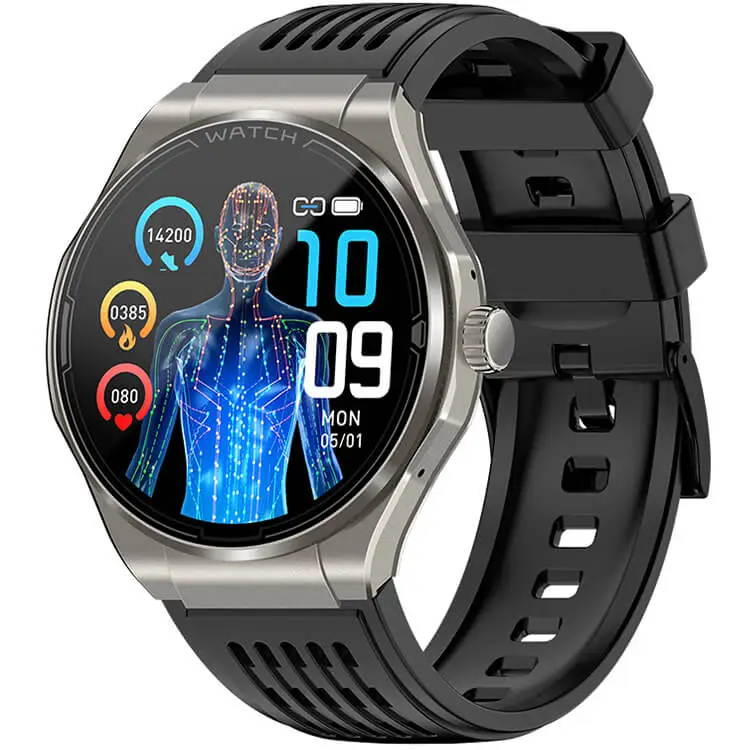Implementing Data-Driven Personalization in Customer Journey Mapping: A Practical Deep Dive
In today’s hyper-competitive digital landscape, understanding and tailoring the customer experience through data-driven personalization is no longer optional—it’s essential. Customer journey mapping (CJM) becomes exponentially more powerful when supported by high-quality, integrated data sources that enable precise segmentation, real-time interaction, and predictive insights. This article provides an in-depth, actionable guide to implementing data-driven personalization within CJM, emphasizing technical rigor, strategic planning, and practical execution.
Table of Contents
- Selecting and Integrating High-Quality Data Sources for Personalization
- Data Collection Strategies and Tools for Real-Time Personalization
- Advanced Data Processing and Segmentation Techniques
- Personalization Algorithm Development and Deployment
- Addressing Privacy, Compliance, and Ethical Considerations
- Monitoring, Testing, and Continuous Optimization
- Practical Step-by-Step Implementation Guide
- Reinforcing Value and Broader Context
1. Selecting and Integrating High-Quality Data Sources for Personalization
a) Identifying Critical Data Types (Behavioral, Transactional, Demographic)
The foundation of effective personalization lies in selecting the right data types. For customer journey mapping, prioritize three core categories:
- Behavioral Data: Website clicks, page views, time spent, scroll depth, interaction with specific elements, and navigation paths. Capture these via client-side scripts or SDKs to monitor real-time engagement.
- Transactional Data: Purchase history, cart abandonment, order values, frequency, and payment methods. Integrate from your e-commerce platform or POS systems.
- Demographic Data: Age, gender, location, device type, and customer segment. Obtain during registration or through third-party integrations.
b) Techniques for Combining Multiple Data Sources to Create a Unified Customer Profile
Combining diverse data streams demands a robust data architecture. Use the following techniques:
- Identity Resolution: Implement deterministic matching via unique identifiers (e.g., email, user ID) and probabilistic matching for anonymous sessions using device fingerprints, IP addresses, and behavioral patterns.
- Master Data Management (MDM): Consolidate customer data into a single source of truth, avoiding duplication and inconsistencies.
- Data Linking and Stitching: Use tools like Apache NiFi, Talend, or custom ETL scripts to merge data from CRM, web analytics, and transactional systems into a unified profile.
c) Ensuring Data Quality: Validity, Completeness, and Consistency Checks
High-quality data underpins reliable personalization. Implement a data validation pipeline involving:
- Validity Checks: Validate data formats (e.g., date formats, email syntax) and value ranges (e.g., age between 18-99).
- Completeness Checks: Identify missing fields; for essential attributes, set up alerts or automated data enrichment workflows.
- Consistency Checks: Cross-verify data across sources; for example, ensure location data matches IP geolocation or device info.
d) Practical Example: Building a Data Warehouse to Support Personalization Efforts
A practical approach involves setting up a scalable data warehouse—using platforms like Snowflake, Amazon Redshift, or Google BigQuery—that consolidates all customer data. Here’s a step-by-step outline:
- Data Extraction: Use ETL tools (e.g., Fivetran, Stitch) to extract data from transactional databases, web analytics, and CRM systems.
- Transformation: Cleanse, normalize, and deduplicate data using SQL transformations or Python scripts.
- Loading: Schedule incremental loads to keep the warehouse updated with new data.
- Data Modeling: Design star schemas or data vault models emphasizing customer-centric tables, relationships, and key metrics.
Proper data infrastructure ensures your personalization efforts are built on reliable, comprehensive, and accessible data—key to delivering relevant content and offers.
2. Data Collection Strategies and Tools for Real-Time Personalization
a) Implementing Event Tracking and Tagging (JavaScript, SDKs) to Capture Customer Interactions
To enable real-time personalization, precise event tracking is vital. Use the following approach:
- JavaScript Tagging: Embed custom scripts on key pages to capture events like clicks, scrolls, and form submissions. For example, use
dataLayervariables with Google Tag Manager for flexible deployment. - SDK Integration: For mobile apps, integrate SDKs (e.g., Firebase, Adjust) to capture in-app events, device info, and user attributes.
- Standardized Event Schema: Define a consistent event naming convention and data payload structure to ease downstream processing.
b) Setting Up Data Pipelines for Real-Time Data Ingestion (Kafka, AWS Kinesis)
Handling high-velocity data streams requires robust pipelines. Consider the following steps:
- Event Streaming: Use Kafka or AWS Kinesis to ingest events as they happen, ensuring low latency and high throughput.
- Stream Processing: Deploy tools like Kafka Streams or AWS Lambda functions to process data in transit—filtering, enrichments, or routing.
- Data Storage: Push processed data into real-time databases such as DynamoDB, Elasticsearch, or into your data warehouse for batch analysis.
c) Overcoming Technical Challenges in Data Latency and Synchronization
Latency and synchronization issues can disrupt personalization accuracy. Tackle these by:
- Implementing Buffering Layers: Use in-memory caches like Redis to temporarily store events before processing, smoothing out bursts.
- Time Synchronization: Use synchronized clocks (e.g., NTP) across systems and timestamp all data at the source.
- Idempotent Processing: Design pipelines to handle duplicate or delayed events gracefully, avoiding inconsistent profiles.
d) Case Study: Deploying a Real-Time Data Collection System for E-Commerce Personalization
A leading online retailer implemented a Kafka-based pipeline capturing user interactions, purchases, and cart activity. They enriched this data with product metadata and user profiles in real time, feeding into a recommendation engine that dynamically adjusted product suggestions. This setup reduced latency to under 200ms, significantly improving personalized onsite experiences and conversion rates. Key success factors included rigorous event schema definition, robust error handling, and continuous pipeline monitoring.
3. Advanced Data Processing and Segmentation Techniques
a) Applying Machine Learning Models for Customer Segmentation (Clustering Algorithms)
Segmentation enhances personalization precision. Use unsupervised learning algorithms such as K-Means, DBSCAN, or Hierarchical Clustering:
- Data Preparation: Select features like recency, frequency, monetary value (RFM), browsing behavior vectors, and demographic attributes. Normalize data to ensure comparability.
- Model Selection: Use silhouette scores or elbow methods to determine optimal cluster numbers. Validate clusters by inspecting centroid characteristics and stability over time.
- Implementation: Run clustering in Python (using scikit-learn) or R, then assign cluster labels to customer profiles in your database.
b) Utilizing Predictive Analytics to Anticipate Customer Needs
Build models to forecast future actions or preferences, such as churn probability, next purchase, or content interest. Techniques include logistic regression, decision trees, and gradient boosting:
- Feature Engineering: Derive features from real-time interaction data, past transactions, and engagement scores.
- Model Training: Use historical data to train models, validating with cross-validation or holdout sets.
- Deployment: Integrate predictions into your personalization engine to proactively tailor content or offers.
c) Automating Segmentation Updates Based on Continuous Data Flow
Implement a dynamic segmentation system that refreshes clusters regularly. Use scheduled batch jobs or stream-based re-clustering:
- Incremental Clustering: Use algorithms like Mini-Batch K-Means to update clusters with new data without retraining from scratch.
- Threshold Triggers: Recompute segments when significant changes are detected (e.g., >10% shift in cluster composition).
- Visualization Dashboards: Build real-time dashboards (e.g., with Tableau or Power BI) to monitor segmentation stability and evolution.
d) Practical Implementation: Building a Dynamic Segmentation Dashboard with Python and SQL
Leverage Python libraries (e.g., pandas, scikit-learn, Plotly) combined with SQL queries to extract, process, and visualize segmentation data. Example steps:
- Data Extraction: Use SQL to retrieve latest customer features from your warehouse.
- Clustering: Run Mini-Batch K-Means in Python, assign segment IDs back into the database.
- Visualization: Create interactive dashboards with Plotly Dash or Streamlit, showing segment sizes, characteristics, and trends.
- Automation: Schedule scripts with cron or Airflow to refresh data and dashboards daily.
4. Personalization Algorithm Development and Deployment
a) Designing Algorithms for Content and Offer Personalization (Collaborative Filtering, Rule-Based Systems)
Select algorithms based on use case complexity and data availability. For product recommendations, consider:
- Collaborative Filtering: Use user-user or item-item algorithms, leveraging matrix factorization (e.g., Alternating Least Squares) via libraries like Surprise or implicit.
- Content-Based Filtering: Match customer preferences with product attributes (e.g., tags, categories) using cosine similarity or TF-IDF vectors.
- Rule-Based Personalization: Implement straightforward if-else rules for special occasions, loyalty tiers, or stock-aware offers.
b) Testing and Validating Algorithm Effectiveness (A/B Testing, Multivariate Testing)
Ensure your personalization models deliver measurable value by setting up rigorous testing frameworks:
- A/B Testing: Randomly assign users to control and treatment groups, compare key metrics like click-through rate, conversion, or revenue.
- Multivariate Testing: Test multiple personalization variants simultaneously to identify the most effective combination of content and offers.
- Statistical Significance:</











